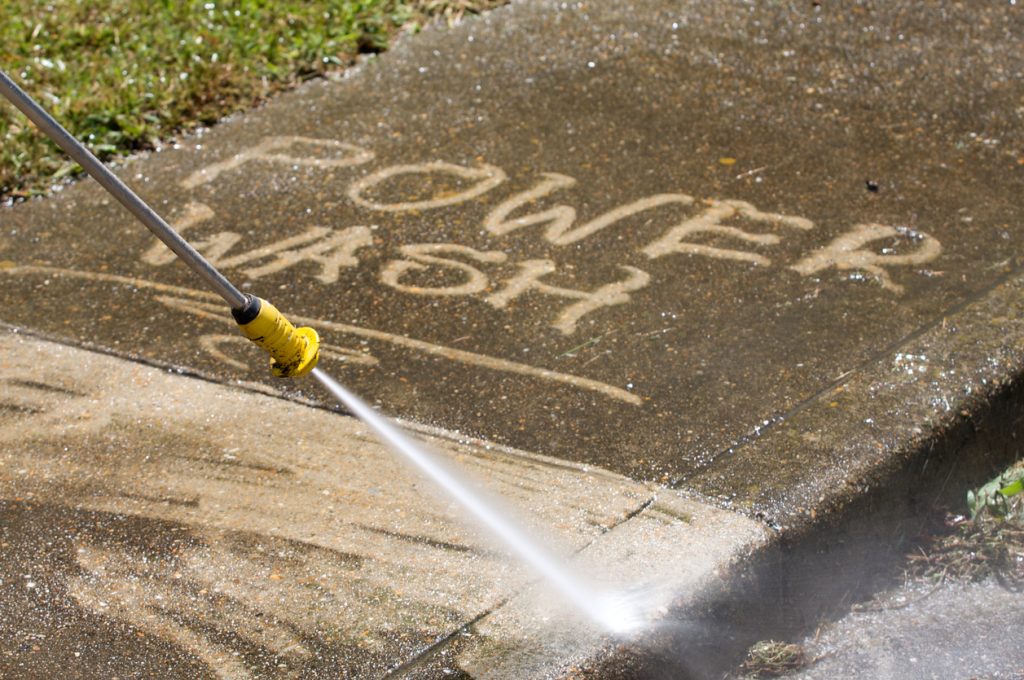
Power washing is one of those satisfying services we all love to watch in action — from grimy driveways being blasted clean to moss-covered siding returning to like-new in seconds. But have you ever wondered what’s actually happening when a pressure washer does its magic?
It turns out, there’s real science behind that powerful spray of water — from physics and chemistry to mechanics and materials. 🧪💦
In this article, we’re going to break down the how and why of high-pressure cleaning so you can better understand what makes it so effective — and how to use that knowledge to your advantage whether you’re a homeowner or a professional. 🧠✨
💥 What Is Power Washing, Exactly?
Power washing (aka pressure washing) is the process of removing dirt, grime, mold, algae, and other surface contaminants by using high-pressure water spray.
It’s commonly used to clean:
- House siding 🏠
- Driveways and sidewalks 🚗
- Patios and decks 🪵
- Fences and outdoor furniture 🪑
- Commercial buildings 🏢
There are two main types:
- Pressure Washing – uses cold water
- Power Washing – uses heated water for enhanced cleaning
The science, though, is largely the same. Let’s explore it step by step. 🔍
🔧 The Mechanics: How Pressure Washers Work
At the heart of every pressure washer is a motor or engine that powers a pump. This pump pressurizes water from your hose and forces it through a narrow nozzle at high speed.
- The motor (gas or electric) drives the pump
- The pump increases water pressure to 1,500–4,000+ PSI (pounds per square inch)
- The hose and nozzle control the direction, angle, and intensity of the spray
💡 Think of it like putting your thumb over a garden hose — that concentrated stream hits harder and cleans faster. A pressure washer is doing that, but with way more power and precision.
⚛️ The Physics: Pressure, Force, and Friction
So what makes pressurized water so effective?
1. Kinetic Energy (Force)
Water under pressure travels at high speed, which means it carries a lot of energy. When it hits a surface, it transfers that energy, breaking bonds between the dirt and the surface below.
It’s the same principle behind:
- Sandblasting
- Car washes
- Industrial cleaning jets
💥 More pressure = more force = deeper cleaning. But too much pressure? You could damage softer materials like wood, paint, or mortar.
2. Friction
The water stream doesn’t just push — it scrubs. This is especially true when you use:
- Rotating nozzles (turbo tips)
- Surface cleaners (with spinning arms)
- Angled tips that increase agitation
This friction helps dislodge tough, stuck-on substances like:
- Gum
- Mildew
- Oil or grease stains
3. Thermal Action (in Power Washing)
Hot water plays a critical role when:
- Removing grease or oil
- Killing mold and bacteria
- Breaking down proteins or sticky residues
🔥 Heat lowers surface tension and softens substances, making them easier to lift off. It also speeds up chemical reactions when using detergent.
Browse Amazon Here For Top Rated Power Washers And Accessories
🧴 The Chemistry: Detergents and Reactions
Water alone is powerful — but sometimes you need a little help.
Enter: cleaning detergents 🧼🧪
These are specially formulated to:
- Break down organic matter (like mold, algae, bird droppings)
- Emulsify grease and oils
- Kill bacteria, moss, and mildew
- Lift dirt so the water can rinse it away
Detergents work by using surfactants — molecules that reduce water’s surface tension, allowing it to spread and penetrate more easily.
✅ With the right detergent and dwell time, you can clean more effectively at lower pressure, which protects delicate surfaces.
🌀 Nozzles and Spray Angles: Why They Matter
Pressure isn’t just about PSI — it’s also about how the water is delivered.
Nozzles come in different angles, each suited for different jobs:
| Nozzle Color | Angle | Use Case |
|---|---|---|
| Red | 0° | Pinpoint blast (rare use) |
| Yellow | 15° | Heavy-duty cleaning (concrete) |
| Green | 25° | General-purpose washing |
| White | 40° | Soft washing siding/windows |
| Black | 65° | Soap application |
🎯 The smaller the angle, the more concentrated the spray — and the higher the impact.
Pro tip: Use wider angles for painted or delicate surfaces to prevent etching or gouging.
🧠 Science in Practice: Why Power Washing Works So Well
Let’s bring it all together. Power washing works because it combines:
- Mechanical energy (high-pressure water blast)
- Thermal energy (hot water, when applicable)
- Chemical energy (detergents and surfactants)
- Time (dwell time to let chemicals do their job)
This is sometimes called the “Cleaning Equation”:
💥 Pressure + 💧 Water + 🧼 Detergent + ⏱️ Time = Clean Surface
The better you balance each factor, the more efficient and safe your cleaning will be.
⚠️ When Science Can Go Wrong
Understanding the science also helps you avoid mistakes like:
- Using high pressure on wood (causes splintering)
- Power washing asphalt shingles (strips granules)
- Spraying upwards under siding (forces water inside walls)
- Applying detergent and letting it dry (leaves streaks)
🧪 Knowledge = cleaner results + less risk.
✅ Final Thoughts
The next time you see a dirty patio come back to life under a blast of water, remember: it’s not just brute force at work — it’s science. 🧠💦
By understanding the mechanics, physics, and chemistry behind power washing, you can:
- Use your equipment more effectively
- Choose the right pressure and detergents
- Prevent damage to your home or property
- Achieve professional-level results every time
Whether you’re cleaning your siding or running a full-fledged washing business, the power is literally in your hands — now backed by science. 🔬💧
Browse Amazon Here For Top Rated Power Washers And Accessories



